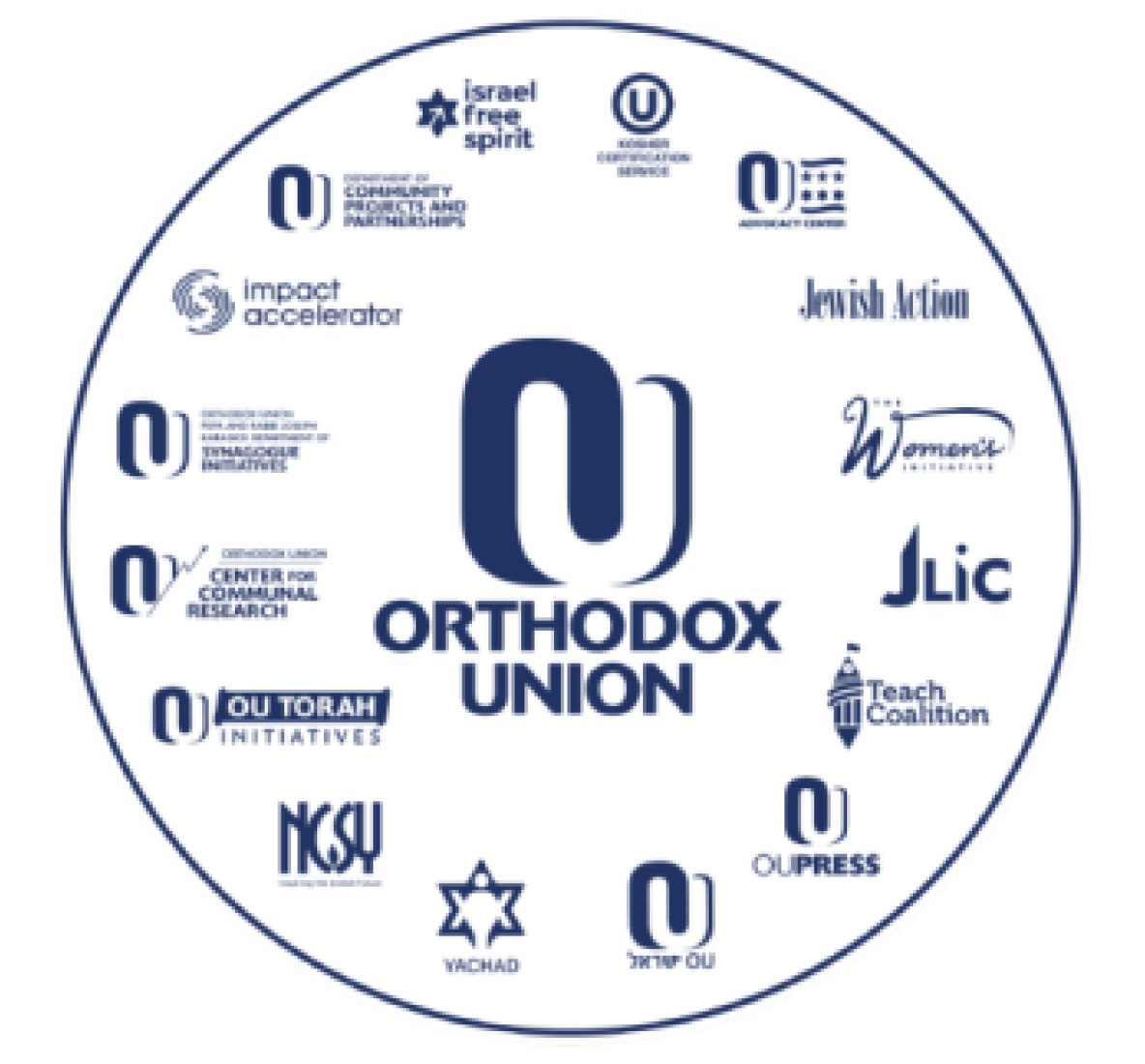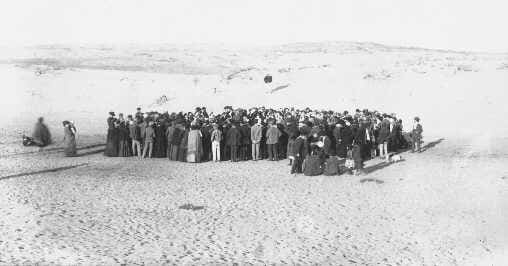
Tel Aviv – the brash, provocative, multicultural and tolerant metropolis called by some the Big Orange – is throwing a year-long birthday bash in honor of the city’s centenary. Judging by the 250,000 people who showed up at the opening pyrotechnic concert Saturday April 4 in Kikar Rabin, it promises to be quite a party.
The day following the massive party at Rabin Square, an equally joyous celebration took place at Yarkon Park, where the Chabad House of Tel Aviv and the municipality of Tel Aviv-Yafo celebrated the Rebbe’s birthday and the centenary of the founding of the city with the writing of a Sefer Torah in honor of the local shlichim and the city’s residents.
A century ago on April 11, 1909 during Passover the city’s 66 founding families met on the sand dunes north of the ancient Arab port of Jaffa to portion out the 12 acres they had bought from Bedouin tribesmen a year before. According to legend, Akiva Aryeh Weiss – the chairman of the Ahuzat Bayit (Homestead) society, went to the shore on the morning of the lottery and collected 120 sea shells, half of them white and half of them grey. He wrote the members’ names on the white shells and the plot numbers on the grey ones. A boy drew names from one box while, at the same time, a girl drew plot numbers from the other.
While Israel’s version of the Plymouth Rock makes a lovely myth, the historical truth is less colourful and Jacobus Kann, the Dutch-Jewish banker who provided the money to buy the land in 1908, has been completely forgotten in Tel Aviv’s collective memory. His family is hoping that with the centenary hoopla a street or a square will finally be named after him. As for Weiss, he and Tel Aviv’s founding mayor Meir Dizengoff were bitter rivals. Weiss accused hizzoner of taking baksheesh.
April 23. Inauguration of David Zondolovitz’s NIS 500,000 statue of Tel Aviv’s first mayor Meir Dizengoff, 16 Rothschild Blvd. In his will, Dizengoff designated his house to be the home of the Tel Aviv Museum of Art (the museum later moved to its current address on Shaul Hamelech Boulevard). On May 14, 1948, it was the site in which David Ben Gurion and the Provisional National Council declared Israel’s independence.
April 24. Tel Aviv Marathon, with 42, 10 and 5 km versions beginning at Charles Clore Park on the beach where the city was founded a century ago
May 27. Tel Aviv’s annual White Night celebration will again feature night-long, city-wide happenings of contemporary Israeli culture, including the biggest bands, singers, DJs, poets, writers and music ensembles.
June 10-20. The RS:X European Open Windsurfing Championship, Gordon Beach. Organized by the Sailing Association and the Israeli Olympic Committee, the competition is expected to draw hundreds of surfers worldwide, including recent Olympic medalists. A large screen on Gordon Beach will allow spectators to enjoy the matches.
June 17-18. Blue Festival, paying homage to the Mediterranean, maritime and Arab cultural influences that have shaped ancient Jaffa. Including choirs, jazz, food, film and theater spread out over the historic port city.
July 16. Verdi’s Requiem performed by Milan’s La Scala opera, Ganei Yehoshua.
September 18-20. During Rosh ha-Shanah 800,000 flowers will bedeck Rabin Square in a colorful tapestry extending over 1,500 sq m. The hidden message will only be revealed when the last flowers are in place.
For the next 12 months Tel Aviv, the city The New York Times has dubbed “the Mediterranean City of Cool”, will be hosting scores of events – all of them free. Learn more.
That squabble set the tone for a century of scandal, political intrigue and even assassination, most notably the never-solved 1933 murder on the beach of Chaim Arlozorov – a Mandate-era Zionist leader who was involved with Magda Goebbels, and the 1995 gunning down of Prime Minister Yitzhak Rabin at a peace rally in front of city hall.
Within a year of the founding of Ahuzat Bayit, the settlers had installed a water system, erected 66 houses including six on subdivided lots, and laid out and paved Herzl, Ahad Ha’am, Yehuda Halevi, Lilienblum and Rothschild streets. The latter boulevard followed a wadi that was filled in with sand hauled by wheelbarrow from the beach. The urban sprawl those pioneers initiated stands as a testament to the failures and triumphs of Zionist urban planning – and the creativity and exuberance of the Jewish people returned to its homeland.
But what to call the utopian garden suburb? Fierce arguments erupted between those who preferred Neve Yafo and those who favoured “Herzliya” in honor of Theodor Herzl, the father of modern political Zionism, who died in 1904. The homesteaders ultimately decided on Tel Aviv, Nahum Sokolow’s felicitous translation of Herzl’s visionary German-language book Altneuland (“Old New Land”).
Unbeknownst to the settlers, the name – combining the Hebrew words for an archaeological mound and springtime – was mentioned in the Bible, in Ezekiel 3:15: “Then I came to them of the captivity at Tel Aviv, that lived by the river Chebar, and to where they lived; and I sat there overwhelmed among them seven days.” That display of irreligiosity came to personify Tel Aviv – a city where the beaches are packed on Rosh ha-Shanah but not by those performing tashlikh, and where the deserted streets and expressways are taken over on Yom Kippur by tens of thousands of bicyclists.
The jumble of a city founded by those Second Aliyah pioneers turned its back on its best resource – its soft sand beaches. The oldest part of the city stretches roughly parallel to the Mediterranean with no streets connecting the historic area directly to the sea. Notwithstanding that hopeful yet hopeless beginning, in 2003 UNESCO recognized the Levantine labyrinth as a World Heritage Site because of its non pareil assembly of more than 4,000 Bauhaus buildings created in the 1920s, ‘30s and ‘40s by bourgeoisie Polish and German immigrants and refugees, and architects fleeing Hitler’s Germany where the modernist International Style was an anathema. Those low-rise, relentlessly geometric residential buildings, unadorned except for curving balconies, “thermometer” stairwells and porthole windows, boasted airy apartments designed to promote a lifestyle that was healthy and, above all, modern.
From Bauhaus promise, Tel Aviv quickly skidded into the architectural dog house. World War II brought the burgeoning city unprecedented prosperity as the British Empire poured its wealth into Mandate Palestine as a bastion against Rommel’s advancing Afrika Korps. With the influx of capital came inflation – and price controls. Landlords, deprived of profit from their newly-built apartment blocks and hamstrung by key money tenants, quickly stopped all upkeep. That systemic neglect, coupled with the sea’s briny breezes, caused the blindingly beautiful White City to degenerate into a gray and dowdy dump.
Yet Tel Aviv’s epoch was still ahead, even as the decay was beginning to spread. Zionism’s acme arguably came on Friday, May 14, 1948 in the hours before the Sabbath when the nascent country’s leadership gathered at the Tel Aviv Museum to hear David Ben Gurion proclaim independence.
The crowds gathered at Mughrabi Square to dance the hora into the night; today the historic movie theatre is a parking lot while once chic Allenby Street has turned into a row of chintzy bazaars and seedy establishments. In short, those denizens who could, abandoned the city center for distant suburbs.
The downward spiral hit bottom in 1962, when the landmark Herzliya Gymnasium on Herzl Street was razed for the construction of the 36-story Shalom Meir tower, Tel Aviv’s first true skyscraper – today dwarfed by more modern towers. (Israel’s tallest building is the 68-floor Moshe Aviv Tower in neighboring Ramat Gan.) The destruction of the historic high school sparked widespread recognition of the importance of conserving historical buildings, and led to the founding of the Society for Preservation of Israel Heritage Sites.
In recent decades the trend of urban rot has been reversed and gentrification set in. Today “The City Which Never Sleeps” has become Israel’s economic, commercial and cultural heart. It claims Israel’s most robust skyline and is the country’s second largest city, attracting businessmen and tourists from all over the world. The city’s population of 390,000 is deceptive; 1.2 million live in the Tel Aviv District – one of Israel’s six administrative districts, comprising 11 cities and a multitude of local councils. Even that number is misleading since it doesn’t include the second ring suburbs and cities to the north, east and south, collectively called Gush Dan (the Dan bloc) in which nearly another two million people reside, many of whom commute to Tel Aviv. Indeed the Hadera to Gadera megalopolis is home to half of Israel’s 7.4 million people. In the final analysis, all of Israel is the hinterland for the seaside city at its heart.
Contemporary Tel Aviv has finally connected with its waterfront thanks to imaginative projects like the renovation of its abandoned 1930s port and the creation of a boardwalk stretching from Herzliya in the north to Bat Yam in the south. Filled with high-class hotels, high-rise office towers, the Qirya (Ministry of Defense headquarters), restaurants, museums, concert halls, cinemas and theatres, the city also boasts Tel Aviv University – Israel’s largest institute of higher education with more than 27,000 students. A modern commuter train line including four stations and a subway-tram under construction offer hope that one day rush hour will not stretch from 7 a.m. to 7 p.m.
What of the next century? With scores of tall buildings on the drawing boards, Tel Aviv may finally lose its gap toothed smile of seaside empty lots which were never built on due to the historic animus between the brash new Jewish city and Jaffa, its rival millennia-old Arab port. Perhaps Rothschild Boulevard will finally be extended to reach the sea.
Meir Dizengoff, who used to inspect his new city on horseback, would be flabbergasted by today’s permissiveness and prosperity – which has attracted tens of thousands of legal and illegal immigrants from the Philippines, Romania and Nigeria, and turned south Tel Aviv into a vast Third World barrio. But one thing he would recognize – a spanking new statue of himself on horseback unveiled for the centennial.
Gil Zohar is a journalist in Jerusalem, Israel. He made aliya from Toronto, Canada in 2005. There he was involved with politics at the municipal, provincial and federal levels, and unsuccessfully ran for York City Council in 1992.
The words of this author reflect his/her own opinions and do not necessarily represent the official position of the Orthodox Union.



